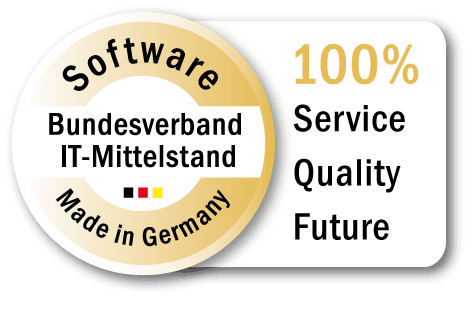CSV files are often indispensable in factories due to their simplicity, platform independence and diverse use-cases. Find out why and in which scenarios CSV files can also be advantageous for machine integration.
What is CSV?
CSV stands for “Comma-Separated Values” (values separated by commas). This is a simple file format for saving data in tabular form. This means that data is arranged in rows and columns, whereby the columns are separated by a separator (e.g. a comma). Each line in a file usually corresponds to a data record, whereby the values for various properties or fields are divided into columns.
Use cases in the factory
In the factory context, communication via CSV can be useful, especially if files are necessary for information exchange or can be realized more economically. The file format is used in production and manufacturing environments to exchange data between OT/IT systems, databases and employees. Examples are:
- Maschine Integration: The file format is used, for example, to exchange data between machines and ERP systems (e.g. transfer of production orders via UC4 jobs in SAP).
- Reporting and analysis: Production data, quality reports and performance indicators can be saved in CSV files and exchanged between machines, employees and databases.
- Documentation: The file format is sometimes used to document configuration data, such as settings and parameters of production machines.
Why integrate machines via (CSV) files?
The use of CSV files for machine integration can have the following advantages:
- Simplicity: The file format is easy to create, read and edit. This makes them a popular choice for data exchange, especially in environments where ease of use and speed are important.
- Cost efficiency: The simple handling and extensive compatibility make CSV a cost-efficient solution for machine integration.
- Platform independence: CSV is platform-independent. This means that software applications and databases can usually read the file format without any problems. This ensures smooth data transfer between different systems.
- Data structure: The file format enables the display of structured data, including numerical values, text and date/time information. This versatility allows it to be used to transfer production data, quality reports, order details and much more.
Disadvantages of a machine integration via (CSV) files
The integration of machines via CSV files has some disadvantages. These should be taken into account depending on the requirements and context of the respective application, including:
- Lack of real-time support: When using CSV files as an interface for the machine connection, updates cannot be made in real time, which leads to delays in the processes.
- Updating problems: Regular file updates can cause problems when writing and retrieving new data records.
- Scalability problems: The use of CSV files can be inefficient with large amounts of data. Processing large CSV files can lead to performance problems and possibly impair scalability.
- Security concerns: CSV files are often unencrypted and may contain sensitive information. As a result, secure exchange may not be sufficiently guaranteed, which can lead to safety risks.
- Difficulties with error handling: Identifying and correcting errors in the data or during data exchange can be complicated.
i-flow and CSV
i-flow performs several functions in combination with CSV. While CSV defines the exchange format, i-flow allows easy configuration of data routes and transformations to seamlessly exchange files between different systems. In i-flow, the business logic and rules according to which the exchange between the systems takes place are defined. If necessary, system protocols and data structures of source and target systems can be converted into the file format.


